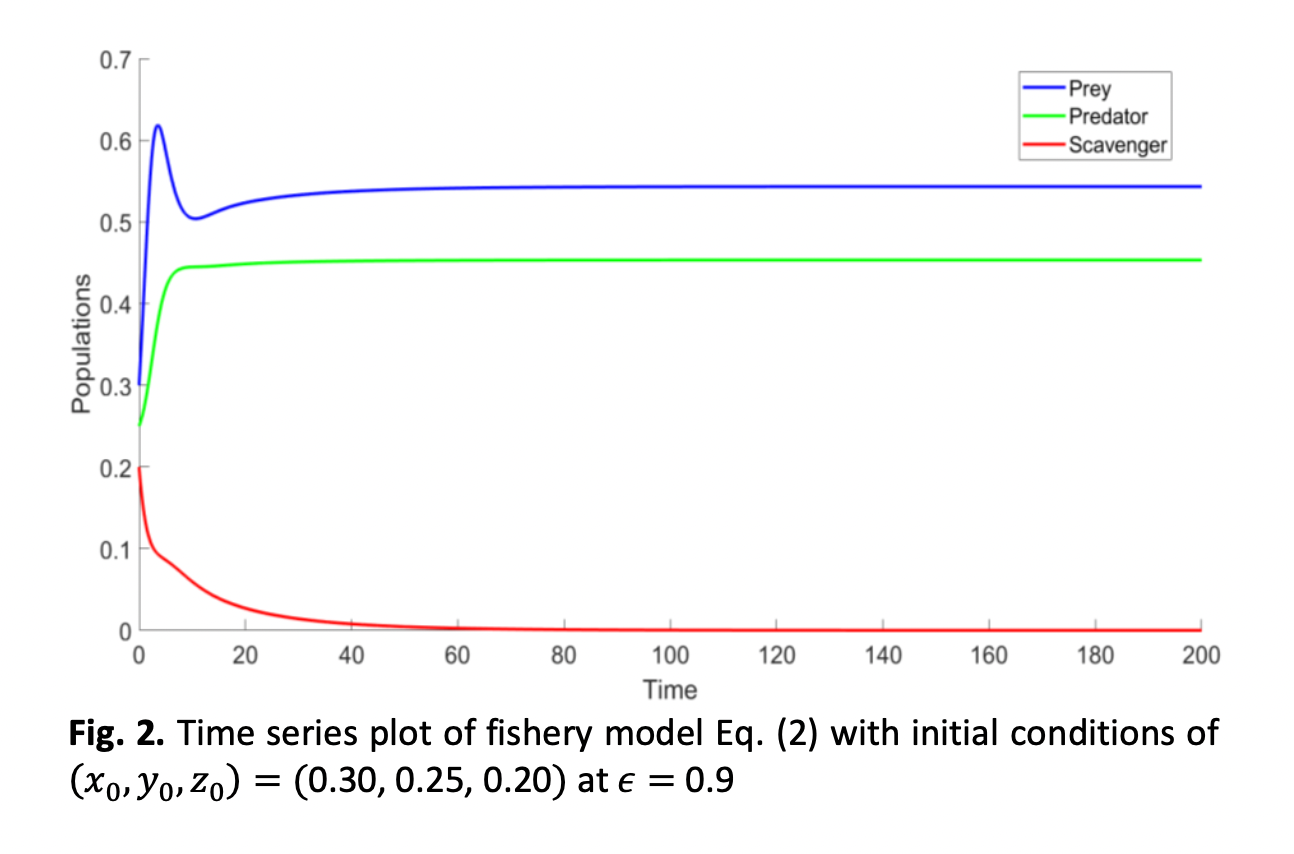The Impacts of Scavenging on the Prey-Predator-Scavenger Fishery Model in the Existence of Harvesting and Toxin
DOI:
https://doi.org/10.37934/araset.31.1.254270Keywords:
Fishery model, Prey-predator-scavenger, Scavenging, Harvesting, Toxin, Transcritical bifurcation, Hopf bifurcationAbstract
The current paper investigates a prey-predator-scavenger fishery model in which both prey and predator species release harmful toxins during predation interaction. The harvesting of scavengers is introduced due to their economic value and serves as one of the important protein sources for humans. Both predator and scavenger fish species consume prey as their food. Scavengers devour the carrion or carcasses of predators which die of natural causes and are infected by the toxins of their preys. The non-negativity of solutions from the fishery model has been derived to ensure biologically meaningful. The model's equilibria are investigated along with its local stability characteristics. We investigate the threshold conditions triggering the bifurcations to occur in the steady-states concerning the scavenging activities by the scavengers. By formulating a suitable Lyapunov function, the global stability analysis of the non-trivial or coexistence steady-state is implemented. The dynamical behaviours of the fishery model, as well as the persistence and extirpation properties, have been analysed using the bifurcation analysis. From the results, it is found that the scavenging parameter in the fishery model with the presence of harvesting and toxin can drive the fish population towards extinction state which is unstable and unfavourable in nature.




























